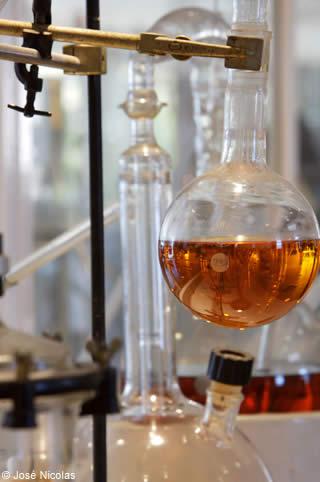

Originally, perfume had a religious function : myrrh, the incense, resin of a penetrating odor, the iris, its roots smelling of violet, the lotus, lily, saffron, of which the stamen has an acrid and burning fragrance, cinnamon, a sort of laurel originating in Ceylon, styrax or storax, which signifies tree or balsam, from which we draw, by making an incision, a resin, the benzoin, and still others more...
The Hebrews learned of them in Egypt. The Bible speaks much about them, whether it be oil for anointing, herbs or incense... The Three Wise Men, Melchior, Gaspard and Balthazar, brought Jesus gold, frankincense and myrrh, the latter two valued as much as gold. If there are saintly odors, there are also diabolic ones. The Devil smells of sulfur.
Perfumes thus came down through the centuries, alternately or simultaneously mystical, medical or esthetic.
Towards the middle of the 16th century, Catherine de Medici, who loved so much to surround herself with strange decors and rare luxuries, grew weary of exotic perfumes. Having heard that on the Provençal shores of the Mediterranean the most fragrant flowers grew, she commanded one of her scientists, the Florentine Tombarelli, to transform through his art those wild petal into precious essences.
At the time, Grasse was a city famous for its tanneries. The tanners of Grasse, to get rid of the odor of the leather, used the natural essences of the region.
That's how a new guild was born : that of Glovers Perfumers. The glove industry went little by little into decline and the tanners of Grasse completely abandoned the glove in favor of perfumes in the middle of the 18th century.
The flowers that made up the charm of the region became a source of wealth for the city blessed by the gods, the only city in the world where the word "factory" evokes poetry.
Still today, Grasse, through the concentration of strong establishments for the primary materials and because of its ancestral know-how, remains the world capital of Perfumery. Grasse is famous for the quality of its essences and its creations for the luxury perfume business, but also for its own perfumes, pharmaceutical and cleaning products, food flavorings, etc...
In Grasse, you will also find perfume-making know-how passed from generation to generation. Actually, the transforming of the primary materials can not always be automated and its is this quality of know-how that is also part of Grasse's heritage. Even if today the flowers are sometimes distilled in the countries of origin, the primary material will arrive in a concrete state and the transformation from the concrete to the absolute will take place here, in Grasse. That step is the most subtle and delicate.
Excerpt from an article in Marie-Claire Maison, Sept 2003 by Marie Kalt
Other accommodations
Bed and breakfastWhere to sleep?